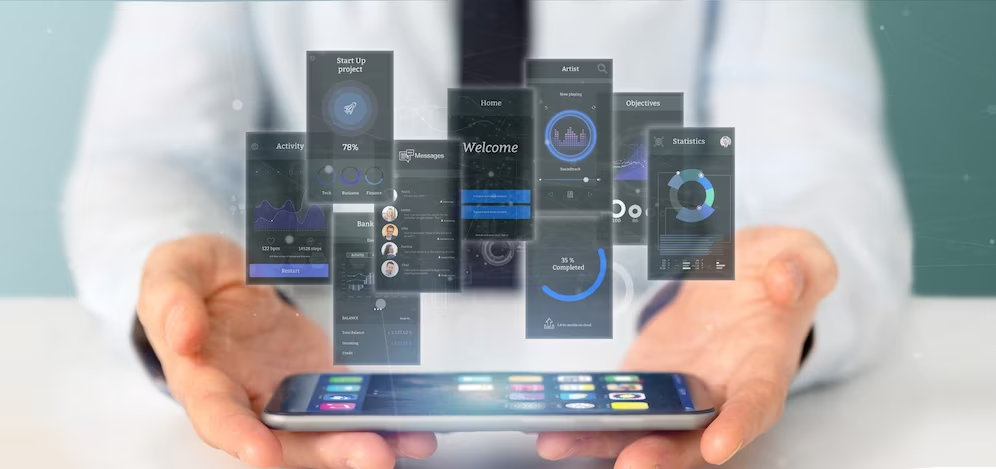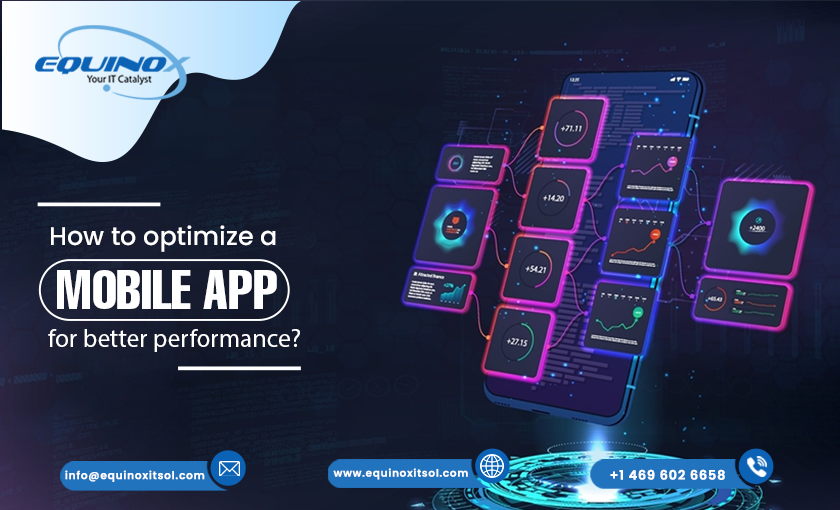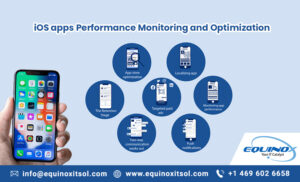How to optimize a mobile app for better performance?
In today’s digital age, the internet plays a crucial role in our everyday lives, from shopping to entertainment. However, we often need to pay more attention to the importance of app performance until it becomes slow and frustrating. People start looking for alternatives when an app takes too long to load. Both Google Play and Apple App Store offer multiple options for every kind of service. Surprisingly, research shows that 70% of users abandon an app if it doesn’t load quickly enough. Not only that, but unsatisfied users also express dissatisfaction by leaving negative ratings, directly impacting the number of app downloads. Improving the app’s average rating from two to four stars can lead to a staggering 68% increase in app store conversions! App performance is something to be considered. Here we will discuss how to optimize mobile apps to increase your app’s performance on various devices.
What are the critical elements of an optimized mobile app?
Creating an effective app goes beyond just its speed when it comes to mobile application performance. Consider these key factors, which are essential to optimize mobile apps.
• Fast app loading time – within 2 seconds.
• Compatibility with the devices it’s used on system requirements and screen resolution.
• Efficient memory and battery usage.
• User-friendly UI and UX for seamless navigation.
• Preserving user data and progress even when in the background.
• Seamless integration with essential third-party apps and device services like camera, Bluetooth, and calendar.
What are the leading causes of sluggish mobile app performance?

Various factors are there that make a negative impact on mobile app performance. Below are the main culprits responsible for subpar performance:
Server-side hiccups:
Excessive data transfers from the server, frequent HTTP calls, and challenges like API latency and errors can all contribute to a lackluster user experience.
Overburdened main thread:
Speed and responsiveness suffer when heavy operations bog down the app’s main thread. Additionally, poor database design and data retrieval techniques can further impede performance.
Interface glitches:
From faulty rendering of shadows to other incorrect rendering techniques, even minor interface issues can hinder the app’s smooth functioning.
These three are the major causes whose impact on your mobile app slows down. Identifying these errors and optimizing your mobile app accordingly can help you get better results.
What checklist do mobile app development companies use to optimize mobile apps?
Below are a list of methods that mobile app development companies use to optimize the performance of the mobile app to enhance the user experience. These are:
Effective Data Caching
To boost app speed, developers identify files and computations that can be cached. Storing resources and operations in the device’s hard drive ensures quick access to app data, even during a network interruption. It is crucial to set appropriate caching periods. For instance, a product catalog can be cached until the next update by the admin, while a user profile should be cached for a single session. Strike a balance between data caching and loading to avoid displaying outdated information and optimize storage space.
Image Optimization
The bigger size of images is not always better for any kind of mobile app. It is not necessary to use images larger than what is displayed on the screen. Optimized images and graphics help eliminate app lag and improve content loading time. Image resizing and compression are some examples of those top mobile app development companies use to reduce image size. Compression reduces image weight without compromising resolution. Resizing adjusts the image size to fit the app appropriately. However, choosing the smallest size is only sometimes ideal. When images are displayed in different sizes, opt for the larger size to ensure proper display across the app.
Boost app speed with faster loading times!

The first impression is everything when it comes to user experience. The target app launch time should be 1.5-2 seconds.
To achieve that:
Avoid resource-intensive tasks, like clearing outdated data from the cache, during the initial app launch. Save them for later.
Load data on-demand. Instead of loading all data at once, load it when the required screen is opened, such as the user profile screen. This helps speed up the overall app launch.
Prioritize content. Define the most important elements to show first and use placeholders for less critical content. This way, users can start interacting with the app while the rest of the data loads in the background.
Keep your code quality high for optimal performance:
Always stay up to date and clear out any unused frameworks to keep your codebase current. These outdated and unnecessary codes can slow down app launch times.
Tackle memory leaks. Identify and eliminate any memory leaks as soon as possible. These can cause crashes and affect overall performance.
Optimize animations. Calculate the size and characteristics of shadows once instead of redrawing them multiple times. Look for platform-specific best practices to ensure smooth animations.
Minimize heavy activity initialization. Move blocking work from the main thread to background threads for asynchronous processing. This avoids bottlenecks and keeps your app responsive.
Ensure offline access for uninterrupted user experience:
Try to implement an offline mode. It allows users to access content even when not connected to the internet. This ensures reliability and enhances user comfort.
Analyze user behaviour on your application. Deliver the content and functionality users need offline by analyzing their behaviour patterns. Save their in-app progress to provide a seamless offline experience.
Design an empty state. Create a visually appealing open form for offline usage so users don’t encounter a blank screen.
Improve the way clients and servers interact to enhance user experience.
• Create a client-server API that only sends necessary data to users. Organize content and objects based on their purpose, and request them when needed. This approach minimizes the amount of data being loaded, resulting in faster app load times.
When developing the API, consider that not all users have high-speed internet. To cater to these cases, break down complex requests into smaller ones that can be executed gradually. Ensure to test your app on a slow network to ensure it performs well in such conditions.
Utilize a CDN (content delivery network) to reduce data load time by reducing the distance between users and the data source.
Conclusion
In the competitive world of mobile apps, flawless performance is key to success. That’s why at Equinox IT Solutions, we prioritize the ability to perform flawlessly in every app we develop. To ensure your app meets the highest standards, we recommend using APM tools to monitor its performance regularly. Many ecommerce app development company also use these APM tools to monitor their apps. These powerful tools help identify any issues that may be affecting your app’s performance, allowing you to react quickly and keep your users satisfied.
If your app still isn’t meeting expectations, then reach our mobile app development company. Through our mobile app development services, we do app performance audits to find out the real cause of performance issues. Then we deliver the best use experiences after fixing all the issues. Reach us today to know more in detail about our mobile app development company and how we optimize mobile apps.
FAQs
Why is app performance optimization important?
App performance optimization is essential, as it directly affects user experience and, ultimately, the success of your app. Multiple ways are there through which you can make your app a better user experience. Such as minimizing the loading time, image optimization, memory usage, etc.
What are some common performance bottlenecks in mobile apps?
Slow loading times, crashes, freezes, and high battery consumption are some common performance bottlenecks in mobile apps. These issues can be caused by various factors such as heavy graphics, inefficient coding, network issues, or lack of optimization for different devices.
How can I reduce app loading times?
Disable the unnecessary app permissions. This can decrease the amount of data an app needs to load. This will increase the speed process. Next step is clear app cache and data
which can help free up space and remove any unwanted files that may be slowing down your apps. Finally, consider upgrading your device or optimizing your smartphone settings to further improve loading times.
What are best practices for optimizing network requests?
A few best practices for optimizing network requests include minimizing the size of requests by compressing files, incorporating caching, prioritizing requests and making use of efficient server-side rendering techniques.
How can I optimize memory usage in my app?
To optimize memory usage, the top app development companies consider minimizing image and media sizes, limit the use of third-party libraries, and implement memory caching techniques.



